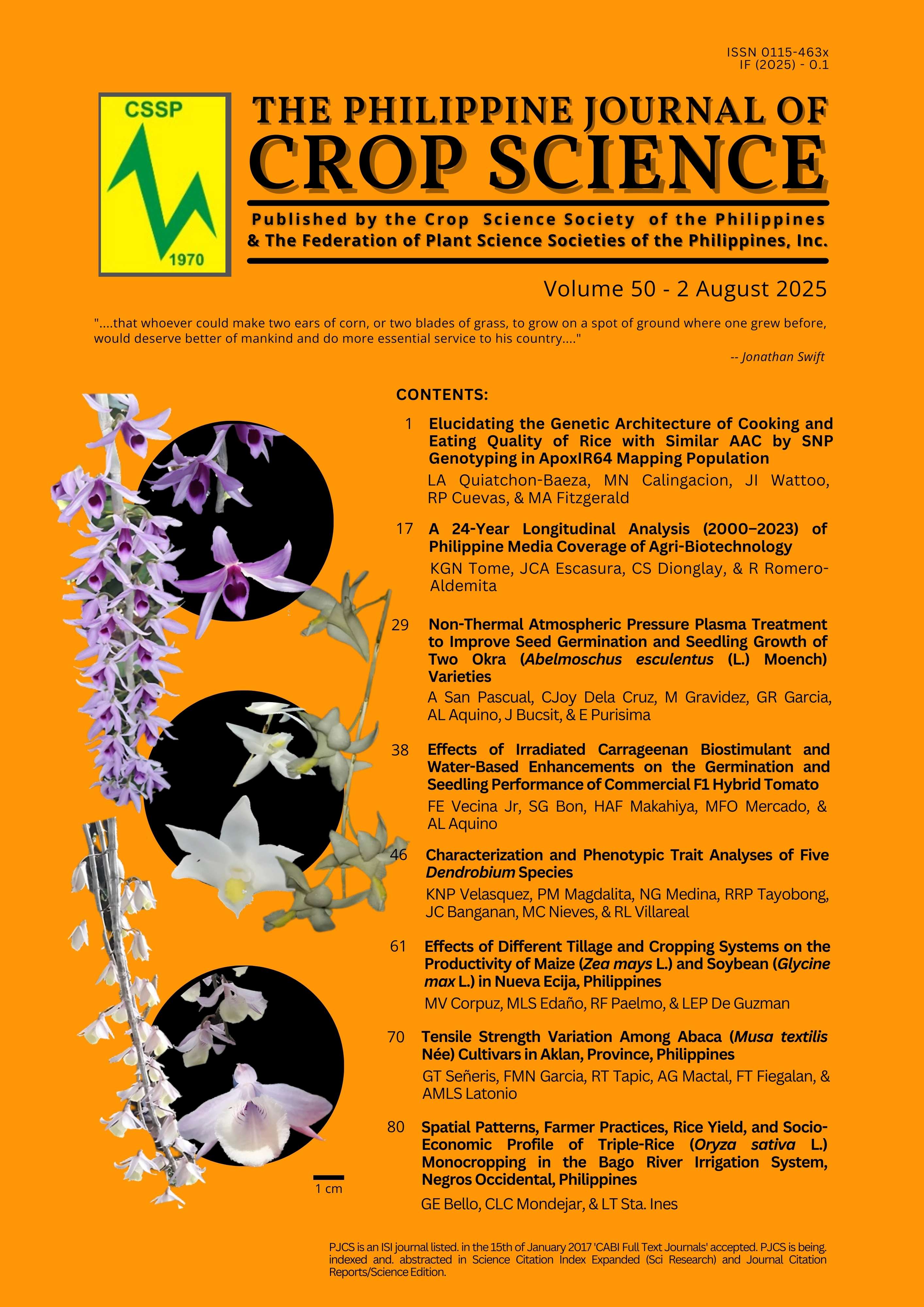Effects of Different Tillage and Cropping Systems on the Productivity of Maize (Zea mays L.) and Soybean (Glycine max L.) in Nueva Ecija, Philippines
Abstract
Intercropping can improve agronomic nitrogen use efficiency (aNUE), land equivalent ratio (LER), and productivity compared to monocropping. A study conducted in Nueva Ecija examined five cropping systems: monocrop maize (M), monocrop soybean (S), maize-soybean intercropping (M+S), soybean with Rhizobium inoculant (SwR), and maize-soybean intercropping with Rhizobium inoculant (M+SwR). These systems were further evaluated under two tillage systems: conventional tillage (CT) and reduced tillage (RT). The study examined the response of different cropping and tillage systems on agronomic traits, yield performance, and economic profitability. The intercrop of maize (0.53) and soybean (1.18) resulted to higher aNUE of 1.71 compared to monocrop of the two commodities. In addition, net income of M+S in reduced tillage system was increased to PhP 177,787.00, with an average LER of 1.70. However, tillage systems did not significantly affect the agronomic or yield components of maize and soybean which can be attributed to less sensitivity to the type of tillage used. Meanwhile, plant height (213.70 cm) and grain yield (5.99 Mg ha-1) of maize were higher in monocropping than in intercropping. Similarly, the harvest index of soybean was highest in monocropping at 0.33 among cropping systems. Although monocropping provided higher yields compared to maize-soybean intercropping, this yield advantage did not necessarily translate to economic benefits. The study highlights the economic, aNUE, and LER benefits of intercropping. However, realizing these benefits in agricultural practice will require advancements in technology and farmer training. Further research is recommended to explore these systems' effects on production in marginal or less fertile soils, focusing on the role of inoculation and cropping systems.


